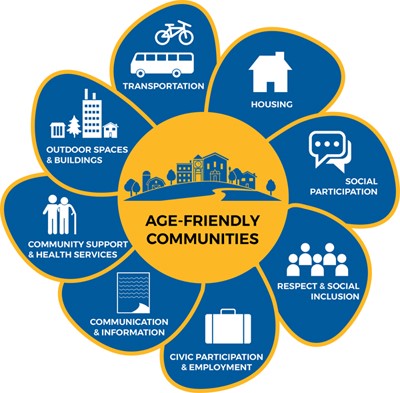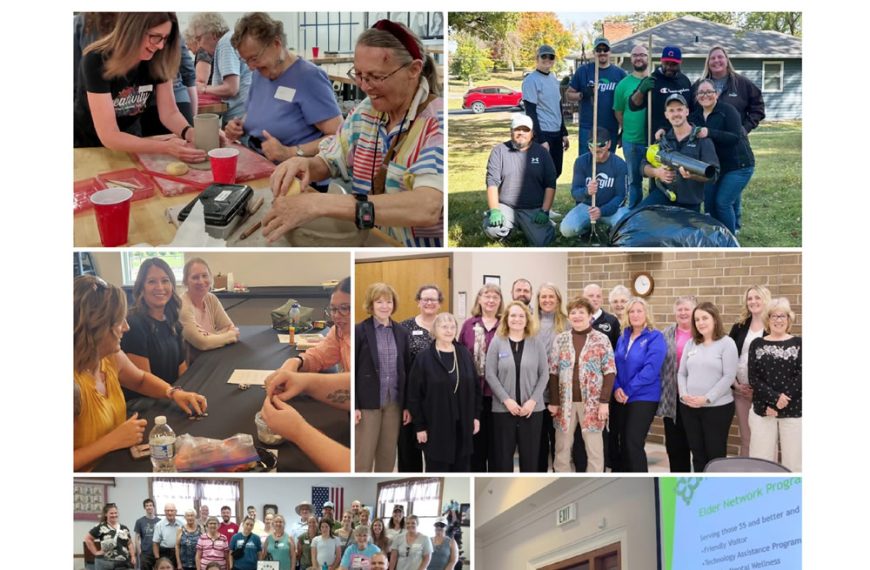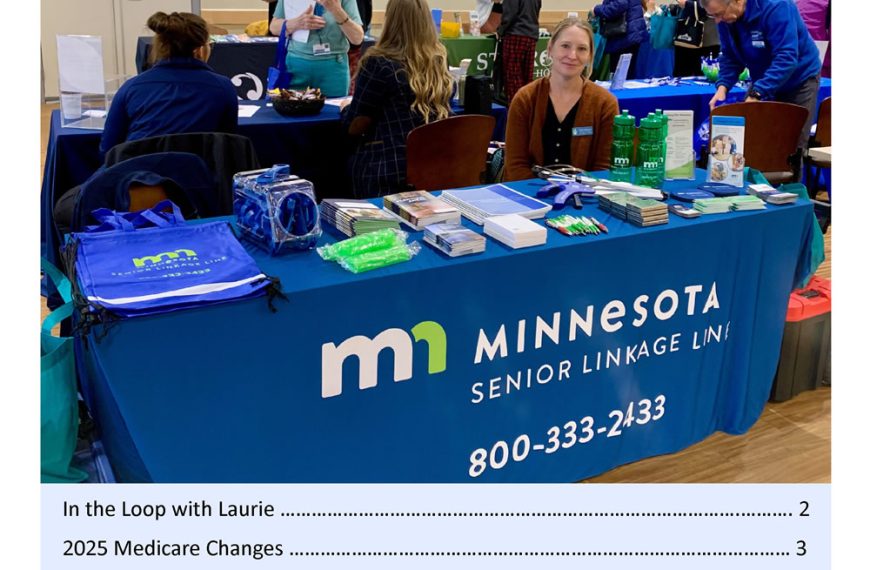
 Multiple communities in MN are working to achieve “Age Friendly” status as designated by the AARP and World Health Organization (WHO). The AARP Network of Age-Friendly States and Communities is the United States affiliate of the WHO Global Network for Age-Friendly Cities and Communities. This international effort was launched in 2006 to help cities prepare for a rapidly aging population alongside a trend toward urbanization.
Multiple communities in MN are working to achieve “Age Friendly” status as designated by the AARP and World Health Organization (WHO). The AARP Network of Age-Friendly States and Communities is the United States affiliate of the WHO Global Network for Age-Friendly Cities and Communities. This international effort was launched in 2006 to help cities prepare for a rapidly aging population alongside a trend toward urbanization.
The aim is to help people live easily and comfortably in their homes and communities as they age. The process is based on the WHO’s 8 domains of livability which are housing, outdoor spaces and building, transportation, communication and information, civic participation and employment, respect and social inclusion, health services and community supports, and social participation.
AARP works with local officials and partner organizations to identify candidate communities for membership in the age-friendly network. Communities can contact AARP to initiate the process themselves, as well. AARP staff help facilitate the community’s enrollment and guides community leaders through the network’s implementation and assessment process. Their website is loaded with helpful tools and information to assist communities in working through the process.
AARP provides an Age-Friendly toolkit to help leaders assess the needs in their community, evaluate the results, and create an action plan to address each domain. One great aspect of this process is the room for adaptability. Some communities may choose to focus on all 8 domains at once, while others focus on their top 2 priorities. AARP recognizes that each community and region is unique and may want to approach the domains in different ways.
The connecting theme for the enrolled communities is the belief that the places we live become more livable, and better able to support people of all ages, when local leaders commit to improving the quality of life for the very young, the very old, and everyone in between. As of 2020 there were nine communities or counties at various stages of becoming Age Friendly. They include: Alexandria, Brooklyn Park, Hennepin County, Maple Grove, Minneapolis, Northfield, Olmsted County, Princeton and St. Cloud.
In 2017 the World Health Organization’s Global Network of Age-Friendly cities and communities expanded to include states. The State of Minnesota is also working to become Age-Friendly. In 2019 Governor Walz signed an executive order indicating a commitment to the age-friendly designation and established an Age-Friendly Council. The state is committed to completing a comprehensive assessment and action plan, implementing, and evaluating the plan and participating in continuous improvement. The goal is for state government, non-profits, communities, businesses, and other sectors to work together on a shared vision.
Research shows that people of all ages benefit from the adoption of policies and programs that make neighborhoods walkable, feature transportation options, enable access to key services, provide opportunities to participate in community activities, and support housing that is affordable and adaptable.
Well-designed, age-friendly communities foster economic growth and make for happier, healthier residents of all ages.
Watch the video on Positively Aging or any of the short videos below.
If you or your community group are looking to get involved with these efforts and want to learn more,
please contact Dan Conway at dan@semaaa.org or Chris Johnson at chrisj@semaaa.org.
Source:
September 2019, “Introducing the Age-Friendly Network”



